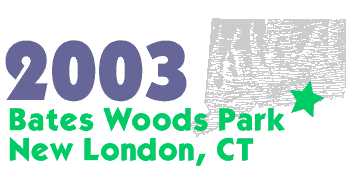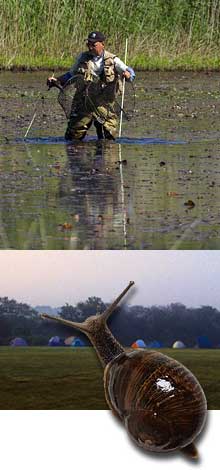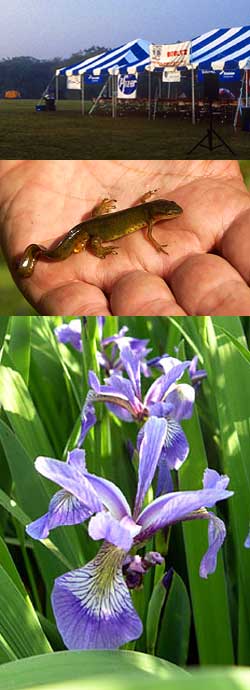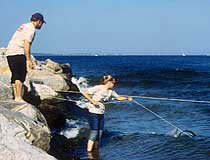 |
|||||||||||
 |
|||||||||||
 |
Dates: June 6-7 Size: aproximately 200 acres
Habitat: mixed hardwood, wetlands, fields, mowed lawns, river, and coastline Distinguishing features: The base of operations for the 2003 BioBlitz was Bates Woods Park, but the survey also included Ocean Beach and Riverside Parks.This was the first BioBlitz to include coastal areas of Long Island Sound. The New London Public Schools were integral to the effort, and are continuing forward with a variety of important related park projects today. |
||||||||||
 |
|||||||||||
 |
 |
||||||||||
|
Total Number of Species: 1,691
Mammals 25 Birds 109 Reptiles 9 Amphibians 14 Fish 17 Butterflies & Moths 240 Beetles 117 Flies 88 Ants & Bees 103 Aquatic Insects 22 Other Insects 91 Spiders/Millipedes/Centipedes 21 Molluscs 16 Bryozoans 1 Crustaceans 34 Non-insect Invertebrates 52 Protists 144 Plant Pathogens 21 Mushrooms & Fungi 85 Mosses and Lichens 42 Plants 440 Total number of scientists: 160 Total organizations represented: 20+ . |
|||||||||||
|
Endangered,
threatened, or at risk species: a nesting pair of Red-shouldered Hawks. The Red-shouldered Hawk is listed as a “Species of special concern” under the State of Connecticut’s Endangered Species Act |
Unexpected: The surveyors of insects noted two lepidopterans of particular interest. Epimarytria auricrinella (Micropterigidae): This microlepidopteran represents the most basal lineage of the Lepidoptera. The larvae are believed to feed on liverworts; adults on fern spores. Bates Woods has only the third known colony in Connecticut. Presumably the moth is more widely distributed, but because of its small size and cryptic habits, it is often overlooked. The single adult of this living fossil, collected in Bates Woods during BioBlitz, is UConn's only specimen from the state of Connecticut. Apamea inordinata: This is a local, dune and sandplain grassland species. There were no specimens of this species in the UConn Insect Collection prior to the blitz. Four specimens were taken in the dune restoration area at Ocean Beach - a testament to the successes of the efforts there.
The surveyors of non-insect invertebrates were “very excited to see acorn worms (hemichordates) and the diversity of polychaetes at Ocean Beach.” The presence of these organisms is a sign that the ocean and estuarine invertebrate community in the waters around Ocean Beach are quite healthy. |
||||||||||